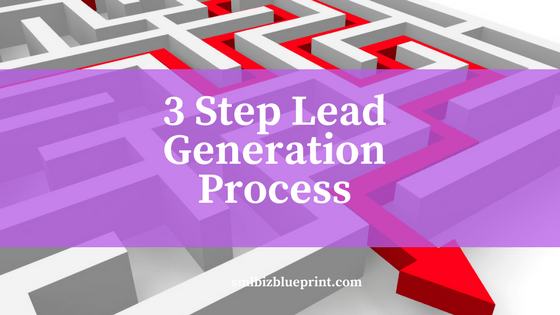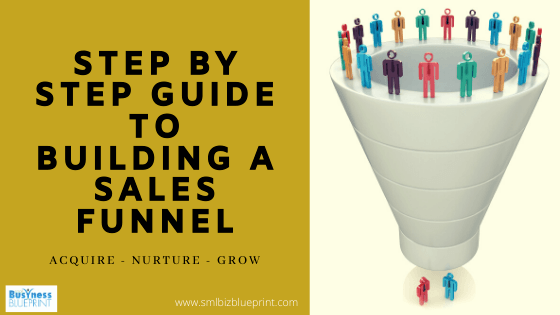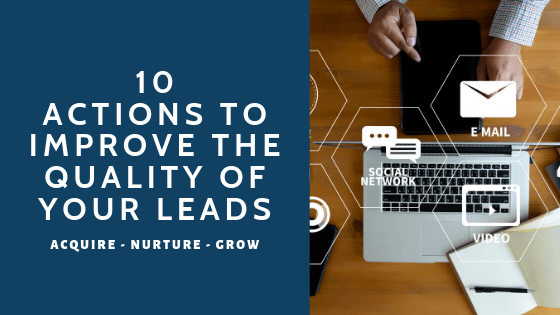Your lead generation campaign should clearly answer and solve one pressing problem for your target market.
You may be able to solve many problems but just focus on one for your prospective clients. You want to build trust and credibility with the prospect and the best way to do this is to show them how to fix the first problem.
Think about this for yourself. You may have a leaking tap at home and you call the plumber to fix the tap. If the plumber turns up on time fixes the tap, doesn’t leave a mess and is neat and tidy, then you will feel confident in hiring them for other problems. BUT if they leave your home untidy, the tap still leaks then there is no way you will have them back again.
Any lead generation campaign must then provide a solution to a problem for your target market.
Your lead generation campaign should be:
Targeted
Clearly, focus on your ideal client.
To do this you need to develop your target market (or persona). This will help you clarify who your ideal clients are, likes, dislikes, hobbies etc. This is extremely important as the tastes, likes and dislikes will vary amongst different groups and types of people.
Now you may have more than one type of ideal client for which you provide the same service.
A dentist may provide a teeth whitening service that is suitable for all of their clients but the reason someone may purchase this is different. A middle-aged person wanting to remove smoking stains from their teeth has a different idea to a woman aged in her twenties that is looking for a beauty treatment.
Differentiate
How are you setting yourself apart from your opposition?
Is it the speed of your service, background, experience.
Segment
How your clients move along your pipeline will depend on the stage they are at in their sales cycle. This is their sales cycle, not your sales cycle.
You segment your customers so you can provide them with relevant pieces of information.
Results
What are the results you want to achieve with your campaign?
How many leads over how many days. How many sign-ups? How many meetings?
3 Steps to building your Lead Generation campaign:
Step 1 USP or UVP
What is your unique selling proposition or unique value proposition?
What sets you apart from your competition. What differentiates you from your opposition?
When developing your UVP focus on what you do for your customers or clients. The majority of companies focus on themselves and they forget about the customer.
Focus on what value you are providing or problem you are solving.
Here are some examples:
We help retailers increase their online sales conversion rates up to 58% and their average order size by 25%.
We help distributors reduce their order-to-cash processing costs by an average of 67.2% at the same time they increase customer satisfaction.
We help companies crack into big accounts and shorten sales cycles. One of our recent clients had an 87% success rate in getting into the largest companies in the US.
Step 2: A Sales Funnel.
As the name implies you build a funnel that enables you to take prospective clients through to buyers and then fans. The good thing about this is that you can automate parts of the process so that you answer all the questions of your prospects.
Think about the different stages and questions clients have as they interact with your company. Then your funnel needs to be responsive to all these different scenarios.
Your sales funnel needs to be structured to convert visitors into qualified leads who are ready and willing to buy.
To be successful your sales funnel needs to be educational. It needs to provide answers to the key questions of your clientele. This will allow the prospect to know you, like you and trust you.
Simply sending someone to your website and asking them to fill in a form with their name and email won’t work.
Funnel Stages
Stage 1 Offer an Introductory Educational Response.
This is typically called a lead magnet. You send the prospect to a landing page where they enter their name and email.
You can offer a variety a lead magnets such as an ebook, video series, email course, checklist
Depending on your target market your ebook may be titled:
- 7 Questions to ask when buying an investment property
- 5 Things You Need to Know When Investing in Australia
- 3 Alternative Ways to Finance Your First Home
This is where having a good idea of who is your target market will help you develop your educational campaign. Having a clear focus on your target market will help you develop your educational marketing campaign.
Stage 2 Offer In-Depth Educational Resource
This is where you can move to qualify the client with a webinar, video series or email course. This is where you explain and show different concepts and how the client can achieve their goal.
A good idea is to have a client complete a questionnaire so that you segment your audience into the areas that interest them.
For a house builder or property developer, this is particularly beneficial because someone looking to invest in apartments has different questions to someone looking to acquire a house.
You can tailor different offers for different markets or type of customer.
You can then send them to a 45-minute evergreen webinar that takes then through the process or they are sent 3 x 15-minute webinars that they can easily watch at home.




